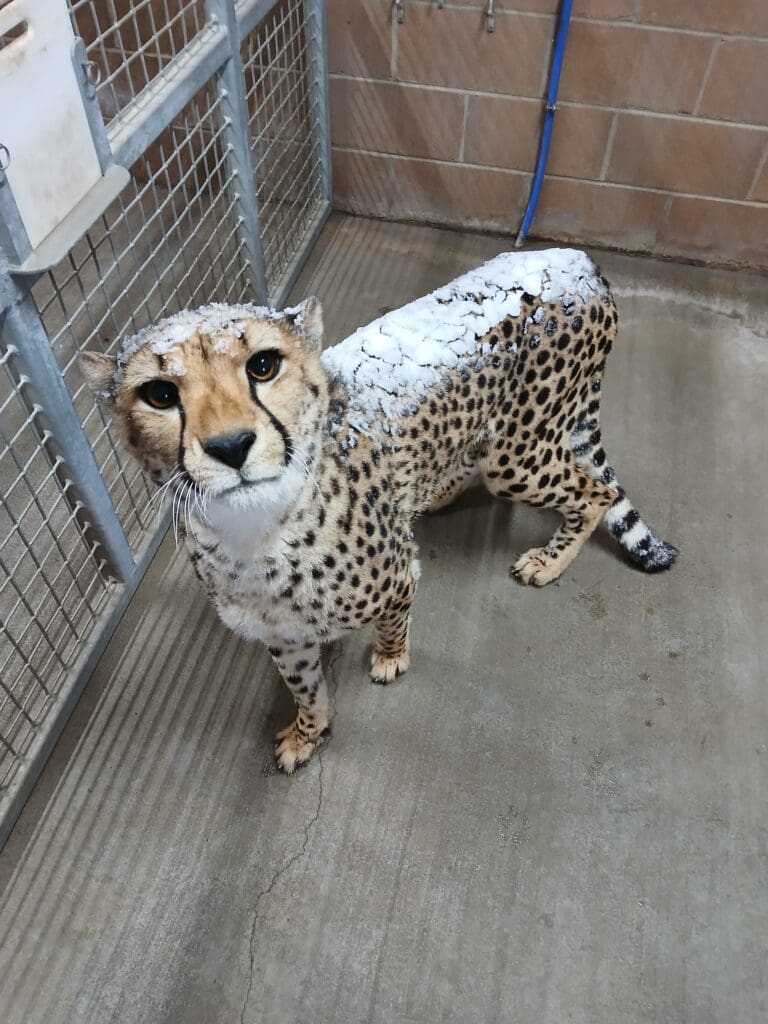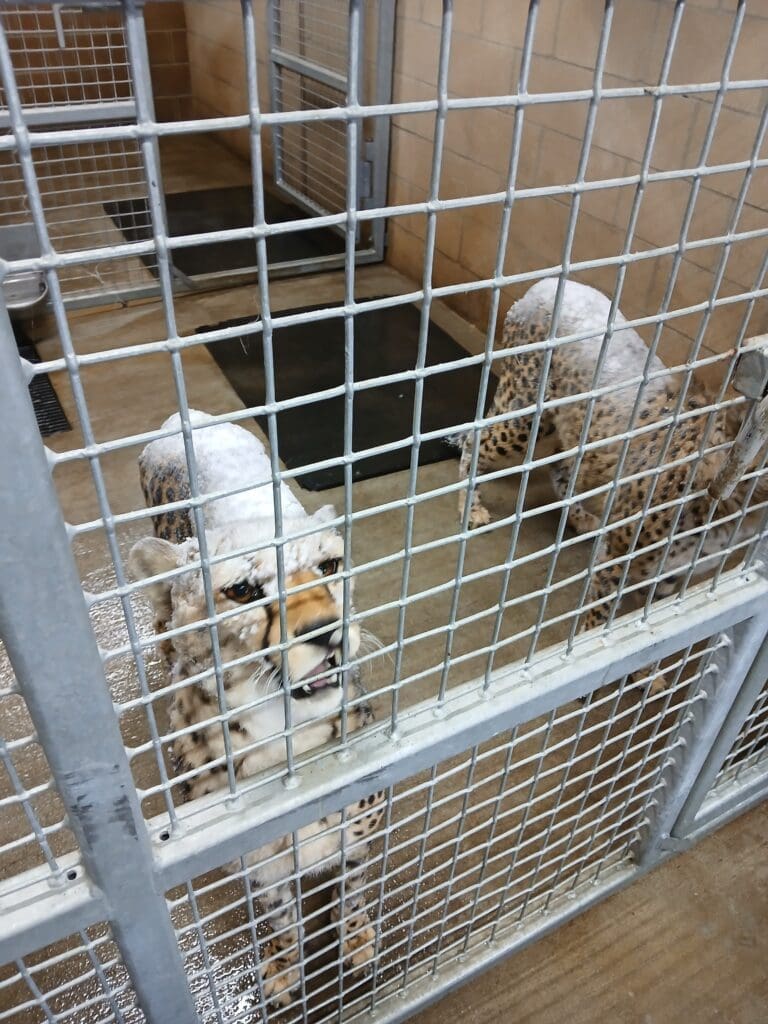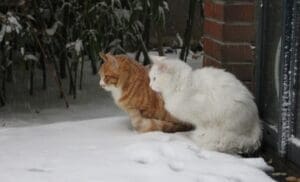By: Ryan Duey
During the winter the staff at the Clay Center Zoo take extra steps to make sure each animal in their care is provided with the necessary needs, based on the animal, to get through the winter comfortably.
Garett Payne, Zoo Curator, said when it gets cold, all animals that stay outdoors get additional bedding to keep warm. The Arctic Foxes and servals exchange homes. This way, the serval can get extra warmth from a heater, while the Arctic Foxes prefer the winter months. Animals, such as tropical birds and tortoises, stay inside. Many of the other animals get additional heating as needed but are allowed to go in and out as they please.
Payne said the bears and the newest addition to the zoo; the Patagonian Cavies were not too impressed with all the snow, ironically a couple of felines you wouldn’t expect were big fans of the blizzard.
“The cheetahs actually handled the cold incredibly well, and when we had that big snowstorm here last month, they were the ones that were most excited to go out every day.”
“I would open their door and let them outside while I was in there cleaning and I mean, they were out there in that blizzard just having an absolute blast, just running in that snow and playing. I had to go make the cheetahs come inside. They came in just completely covered in snow, from the tip of their nose to the tip of their tail.”
Payne said the over a foot of snow did kind of throw a wrench in everything, but that much snow is rare, and they got through it.
As for water, Payne said some of the animals have constantly running water, which keeps the bowls from freezing. Animals on the side without running water are given heated bowls, ensuring all animals always have fresh water.
A fun fact is that the bears at the zoo have not hibernated, but they have slowed down their feeding. Payne spoke about how their “pampered” environment plays a part in that.
“There’s a lot of factors that play into hibernation in general. Bears in really cold harsh areas, like Alaska; hibernate for survival. But say black bears down in more southern areas, like Louisiana; they don’t fully hibernate down there.”
“With our bears, I think a lot of it has to do with the fact that they’ve got a very nice indoor heated building, our pampered bears. So, it’s not really something that they’re going to do.”
“It’s possible as they get older, they might go into what they call torpor, which is kind of like a semi-hibernation where they’re down and sleeping for a few days, but then they get up. But it’s not like the whole wintertime kind of hibernation.”
Payne said the best time to visit is first thing in the morning or between 4:00 and 5:00 p.m. as those are the times the animals are most active. Some of the animals, like the cheetahs, monkeys, and lemurs are pretty active throughout the whole day.
Payne wanted to emphasize that with the Welcome Center being open zoo attendees now must enter and exit through the Center, not the old walk-in gate that was previously used.














